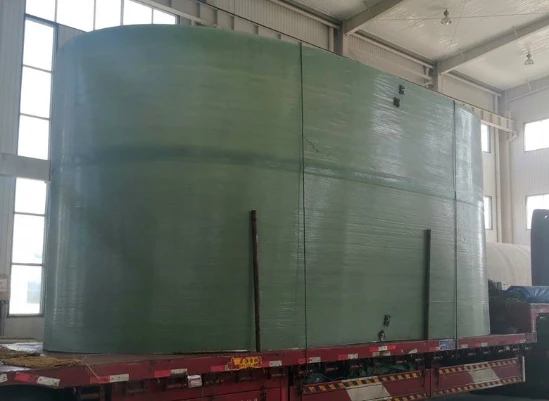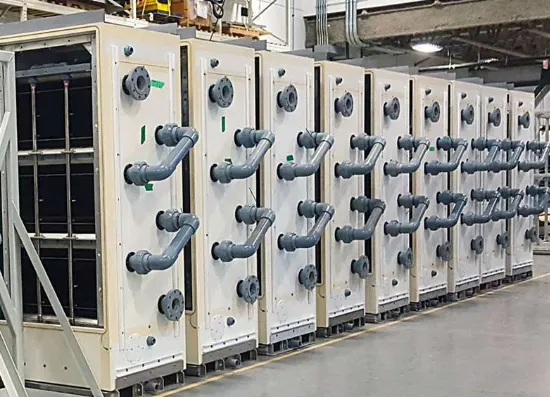
-
 Afrikaans
Afrikaans -
 Albanian
Albanian -
 Amharic
Amharic -
 Arabic
Arabic -
 Armenian
Armenian -
 Azerbaijani
Azerbaijani -
 Basque
Basque -
 Belarusian
Belarusian -
 Bengali
Bengali -
 Bosnian
Bosnian -
 Bulgarian
Bulgarian -
 Catalan
Catalan -
 Cebuano
Cebuano -
 China
China -
 China (Taiwan)
China (Taiwan) -
 Corsican
Corsican -
 Croatian
Croatian -
 Czech
Czech -
 Danish
Danish -
 Dutch
Dutch -
 English
English -
 Esperanto
Esperanto -
 Estonian
Estonian -
 Finnish
Finnish -
 French
French -
 Frisian
Frisian -
 Galician
Galician -
 Georgian
Georgian -
 German
German -
 Greek
Greek -
 Gujarati
Gujarati -
 Haitian Creole
Haitian Creole -
 hausa
hausa -
 hawaiian
hawaiian -
 Hebrew
Hebrew -
 Hindi
Hindi -
 Miao
Miao -
 Hungarian
Hungarian -
 Icelandic
Icelandic -
 igbo
igbo -
 Indonesian
Indonesian -
 irish
irish -
 Italian
Italian -
 Japanese
Japanese -
 Javanese
Javanese -
 Kannada
Kannada -
 kazakh
kazakh -
 Khmer
Khmer -
 Rwandese
Rwandese -
 Korean
Korean -
 Kurdish
Kurdish -
 Kyrgyz
Kyrgyz -
 Lao
Lao -
 Latin
Latin -
 Latvian
Latvian -
 Lithuanian
Lithuanian -
 Luxembourgish
Luxembourgish -
 Macedonian
Macedonian -
 Malgashi
Malgashi -
 Malay
Malay -
 Malayalam
Malayalam -
 Maltese
Maltese -
 Maori
Maori -
 Marathi
Marathi -
 Mongolian
Mongolian -
 Myanmar
Myanmar -
 Nepali
Nepali -
 Norwegian
Norwegian -
 Norwegian
Norwegian -
 Occitan
Occitan -
 Pashto
Pashto -
 Persian
Persian -
 Polish
Polish -
 Portuguese
Portuguese -
 Punjabi
Punjabi -
 Romanian
Romanian -
 Russian
Russian -
 Samoan
Samoan -
 Scottish Gaelic
Scottish Gaelic -
 Serbian
Serbian -
 Sesotho
Sesotho -
 Shona
Shona -
 Sindhi
Sindhi -
 Sinhala
Sinhala -
 Slovak
Slovak -
 Slovenian
Slovenian -
 Somali
Somali -
 Spanish
Spanish -
 Sundanese
Sundanese -
 Swahili
Swahili -
 Swedish
Swedish -
 Tagalog
Tagalog -
 Tajik
Tajik -
 Tamil
Tamil -
 Tatar
Tatar -
 Telugu
Telugu -
 Thai
Thai -
 Turkish
Turkish -
 Turkmen
Turkmen -
 Ukrainian
Ukrainian -
 Urdu
Urdu -
 Uighur
Uighur -
 Uzbek
Uzbek -
 Vietnamese
Vietnamese -
 Welsh
Welsh -
 Bantu
Bantu -
 Yiddish
Yiddish -
 Yoruba
Yoruba -
 Zulu
Zulu
FRP Field Tanks Durable, Corrosion-Resistant Storage Solutions
- Overview of FRP/Fiberglass/GRP Field Tanks
- Technical Advantages Over Traditional Materials
- Performance Comparison: Leading Manufacturers
- Customization Options for Diverse Applications
- Case Studies: Real-World Implementations
- Cost Efficiency and Long-Term Value
- Future Trends in FRP Tank Technology

(frp field tank)
Why FRP Field Tanks Dominate Modern Storage Solutions
FRP (Fiberglass Reinforced Plastic), also known as GRP (Glass Reinforced Plastic) field tanks, have revolutionized industrial and agricultural storage. These tanks leverage composite materials to deliver unmatched durability, corrosion resistance, and lifespan—often exceeding 30 years with minimal maintenance. Unlike steel or concrete alternatives, fiberglass field tanks resist chemical degradation, UV radiation, and extreme temperatures, making them ideal for harsh environments. A 2023 industry report revealed that FRP tanks reduce replacement costs by 60% compared to traditional options, driving adoption across sectors like water treatment, agriculture, and chemical processing.
Technical Superiority in Material Engineering
The structural integrity of FRP field tanks stems from layered fiberglass sheets bonded with thermosetting resins. This design achieves a tensile strength of 1,200 MPa, outperforming polyethylene (PE) tanks by 300% and steel tanks by 150% in stress tests. Additionally, GRP field tanks maintain leak-proof performance under pressures up to 25 psi, critical for high-capacity liquid storage. Their non-reactive surfaces prevent contamination, meeting NSF/ANSI 61 standards for potable water. With weights 50% lighter than steel, installation and transportation costs drop significantly, enhancing ROI.
Manufacturer Showdown: Key Metrics
| Brand | Material Grade | Max Capacity (Gallons) | Corrosion Resistance | Warranty (Years) |
|---|---|---|---|---|
| TankPro FRP Series | ISO 14692-2 | 50,000 | pH 1-14 | 20 |
| FiberSolutions GRP | ASTM D5364 | 30,000 | pH 2-12 | 15 |
| GRPTech UltraTank | ASME RTP-1 | 75,000 | pH 0.5-14 | 25 |
Tailored Designs for Industry-Specific Needs
Customization drives the versatility of fiberglass field tanks. Manufacturers offer modular designs with diameters up to 25 feet and heights exceeding 40 feet, accommodating site-specific spatial constraints. Options include epoxy-lined interiors for acidic fluids, dual-wall constructions for leak detection, and insulated layers for temperature-sensitive liquids. Agricultural clients frequently opt for integrated filtration ports and agitator mounts, while chemical plants prioritize venting systems compliant with OSHA 1910.106. Such adaptability has spurred a 45% rise in bespoke FRP tank orders since 2020.
Proven Success Across Sectors
In a 2022 project, a California winery replaced corroded steel tanks with GRP field tanks, slashing maintenance expenses by 78% and eliminating fermentation contamination. Similarly, a Texan oil refinery utilized custom FRP tanks for hydrochloric acid storage, achieving zero leaks over five years—a stark contrast to previous PE tanks requiring biannual replacements. Municipalities have also adopted fiberglass tanks for stormwater management, with a Michigan county reporting a 90% reduction in infrastructure repairs after switching from concrete.
Economic Viability and Sustainability
While FRP field tanks have 10-15% higher upfront costs than PE tanks, their 50-year lifecycle cuts total ownership costs by half. Energy savings further enhance value: GRP production consumes 75% less energy than steel manufacturing, aligning with net-zero goals. A 2024 LCA (Life Cycle Assessment) confirmed that fiberglass tanks reduce carbon footprints by 40% compared to metal alternatives, bolstering their ESG appeal.
Future-Proofing Infrastructure with FRP Field Tanks
As industries prioritize resilience, FRP/GRP field tanks emerge as long-term assets. Innovations like smart sensors for real-time integrity monitoring and self-healing resin coatings are set to redefine storage standards. With a projected 8% annual market growth through 2030, fiberglass field tanks will remain pivotal in sustainable infrastructure, offering scalability unmatched by obsolete materials.

(frp field tank)
FAQS on frp field tank
Q: What are the advantages of using an FRP field tank?
A: FRP field tanks offer high corrosion resistance, lightweight construction, and durability, making them ideal for harsh environments. They require minimal maintenance and have a longer lifespan compared to traditional materials like steel or concrete.
Q: How does a fiberglass field tank compare to steel tanks?
A: Fiberglass field tanks are lighter, rust-proof, and resistant to chemical degradation, unlike steel tanks. They also have lower installation and maintenance costs while providing similar or greater structural strength.
Q: What industries commonly use GRP field tanks?
A: GRP field tanks are widely used in water treatment, chemical processing, agriculture, and oil/gas industries. Their versatility and resistance to corrosive substances make them suitable for storing liquids like chemicals, fertilizers, and potable water.
Q: Are FRP field tanks easy to install?
A: Yes, FRP field tanks are lightweight and often modular, simplifying transportation and installation. Their design allows for quick assembly on-site, reducing labor and time compared to heavier alternatives.
Q: Can GRP field tanks be customized for specific needs?
A: Absolutely. GRP field tanks can be tailored in size, shape, and fittings to meet project requirements. Custom coatings and reinforcements can also be added for enhanced chemical resistance or structural support.
Latest news
-
Innovative Tungsten Carbide Gold Mining Bits for Enhanced Drilling EfficiencyNewsMay.29,2025
-
High-Temp Fiberglass, GRP & FRP Products for Steel Smelting PlantsNewsMay.29,2025
-
FRP Panels Durable FRP Trough Covers & Moisture Traps SolutionsNewsMay.29,2025
-
FRP Desalination Pipes & Fittings Efficient Water Treatment SolutionsNewsMay.29,2025
-
Fiberglass Clarifier Systems Efficient Water & Solid Treatment SolutionsNewsMay.29,2025
-
Fiberglass Water Tanks Durable GRP & Fiber Water Storage SolutionsNewsMay.29,2025









